Chapter Two
Edison’s Gallery of Inventions
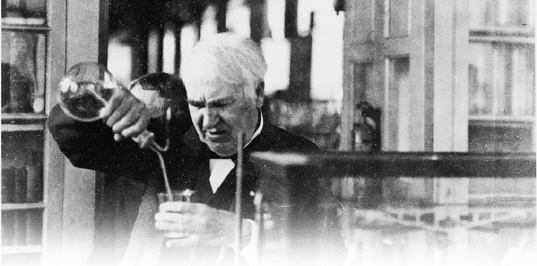
Thomas Alva Edison’s successes light up the pages of history. His inventions and ideas have changed the way Americans, and the world, talk, entertain, travel, treat the sick, and fight enemies. Curious and tireless, Edison explored and experimented with everything from toys to torpedoes.
Edison is the only inventor to earn U.S. patents every year for 65 straight years. The last of Edison’s 1,093 patents was granted in 1933, two years after his death on October 18, 1931. His name is connected with some of the most famous inventions, including the incandescent light, the phonograph, and moving pictures. Of course, with a production record like that, Edison could not possibly succeed every time. He had his share of flops, but he recognized that failure was part of the invention process. He once said, “Spilled milk don’t interest me. I have spilled lots of it, and while I have always felt it for a few days, it is quickly forgotten.” Here’s a look at just some of this remarkable man’s amazing inventions, improvements, and discoveries—both the successes and the failures.
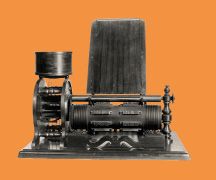
Electrical Vote Recorder
Edison was a 21-year-old telegraph operator when he filed for his first patent in 1868, for a machine that allowed lawmakers to press a “yes” or a “no” button from their seats, saving the time of individual voice voting and tallying.
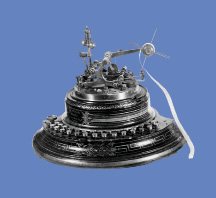
Universal Stock Printer
Stock tickers were telegraph-like machines that received and printed minute-by-minute reports on the prices of gold and stocks. In 1869, Edison developed an improved, universal stock printer. It was faster and more reliable, and printed information more clearly than previous models.
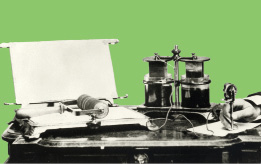
Telegraph Systems
During the 1870s, Edison received more than 100 patents for work related to the telegraph, including improving the speed and increasing the number of telegrams that could be sent over one wire at the same time.
Typewriter
Christopher Sholes invented the first working typewriter in 1868, but it produced letters that wandered on the page. Edison designed a “type-writing machine” that printed words in a straight line.
Etheric force
While experimenting with sound and telegraphy in 1875, Edison noticed unusual sparks coming from a vibrating magnet. He called the phenomenon—which turned out to be electromagnetic waves traveling through space—“etheric force.” This turned out to be the same energy produced by radio transmissions and microwave ovens.
Electric Pen
In 1876, Edison patented his first copying system. He invented and then used an electric pen to make tiny holes in wax-coated paper. Edison pressed ink through the holes onto sheets of regular paper. His invention led to the development of the mimeograph, a duplicating machine used by schools and businesses. According to one advertisement, the electric pen could produce “5,000 copies from a single writing.” It became popular with lawyers, mapmakers, and other business owners.
Electric Railway
Exploring new uses for his electric motor, Edison started a small passenger railway near Menlo Park, New Jersey, in 1880. His electric locomotive was the first of its kind in this country, and it became the foundation for streetcar and subway systems.
Edison Effect
During tests on his electric light bulb in 1883, Edison made an exciting discovery: Electrical currents could flow through a vacuum without a wire. His patent for what he called the “Edison Effect” marked a first in the field of electronics and formed the foundation for radio, television, and radar systems.
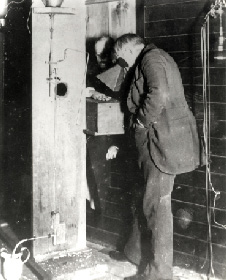
Edison studies his colleague’s hand through a fluoroscope.
Fluoroscope
After German physicist Wilhelm Roentgen discovered x-rays in 1895, Edison became fascinated by radiation. He proceeded to invent the fluoroscope, whereby doctors using x-rays could see internal body structures on a fluorescent, or glowing, screen.
Magnetic Ore Separator
Edison spent the 1890s trying to mine iron ore for the Pennsylvania steel mills. He invented a machine with a giant magnet to pull the valuable iron from worthless rock and sand. Edison lost money on this project.
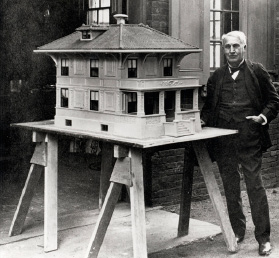
One of Edison’s less-popular ideas was to build houses, like this model, from cement.
Cement Production
Edison went from mining ore to making cement. His equipment produced construction material for roads, buildings, and even Yankee Stadium baseball park. Edison also built concrete phonograph cabinets and dreamed of selling concrete houses, bedroom sets, and pianos. The cement company lost millions of dollars.
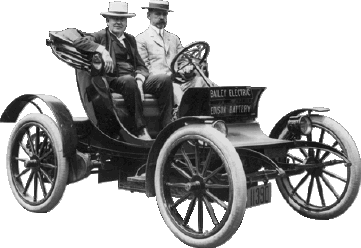
Alkaline Storage Battery
Edison’s support for electric cars prompted him to develop an improved storage battery. After 10 years of research, he introduced the nickel-iron-alkaline storage battery in 1909. The growth of gasoline-powered cars eliminated demand for cars that ran on stored electricity, but Edison’s battery became a commercial success in other areas—such as railroad signals, miners’ lamps, and marine buoys. In fact, it made more money than any of his other inventions.
Defense-Related Inventions
In 1915, during World War I (1914–1918), Edison became chairman of the U.S. Navy Consulting Board. He worked on many projects, including torpedoes, flamethrowers, navigating equipment, and submarine detection techniques. Edison became discouraged, though, when the Navy failed to follow up on his ideas. His greatest military contribution may have been urging Congress to create Washington, D.C.’s Naval Research Laboratory, the first institution for military research.